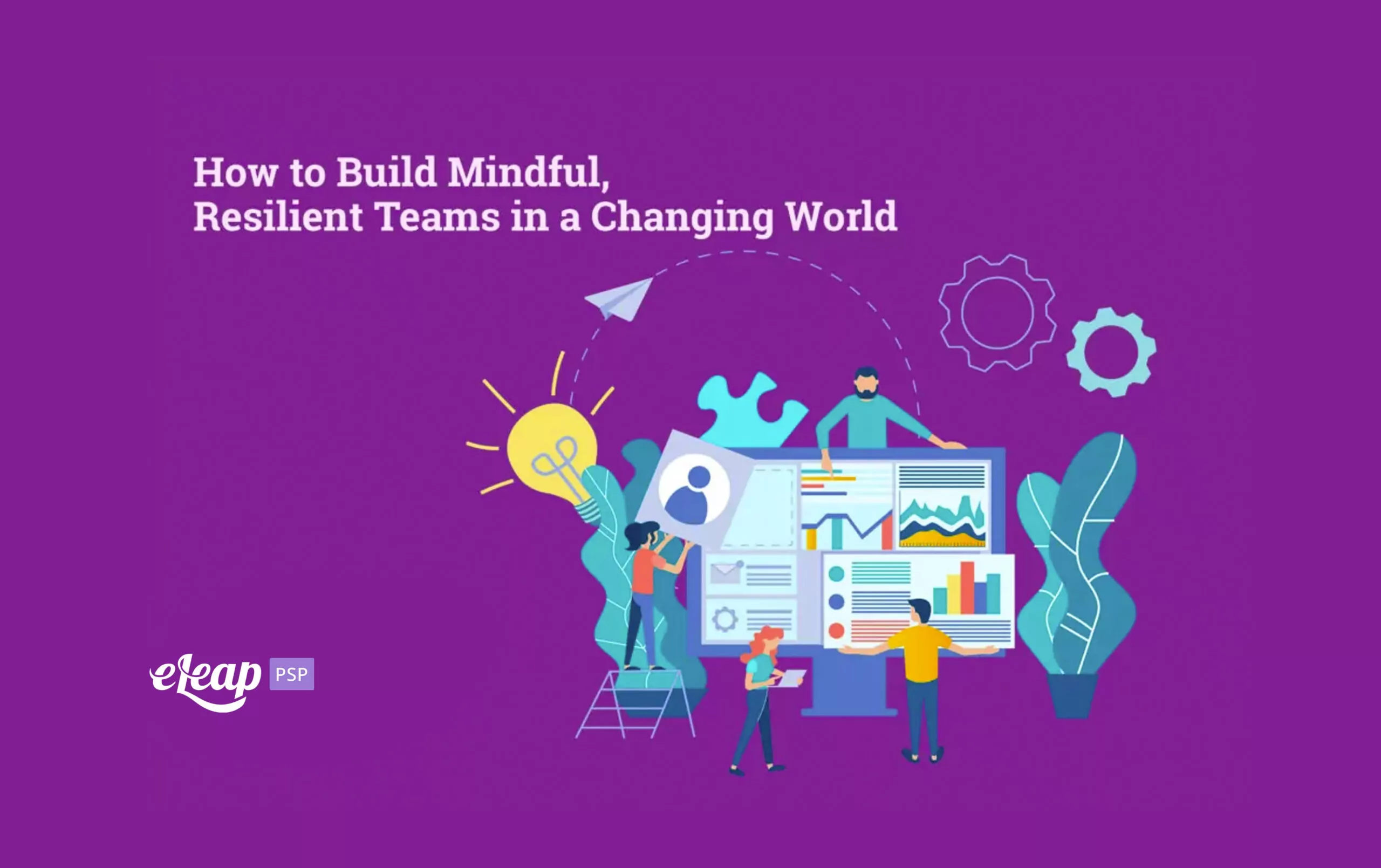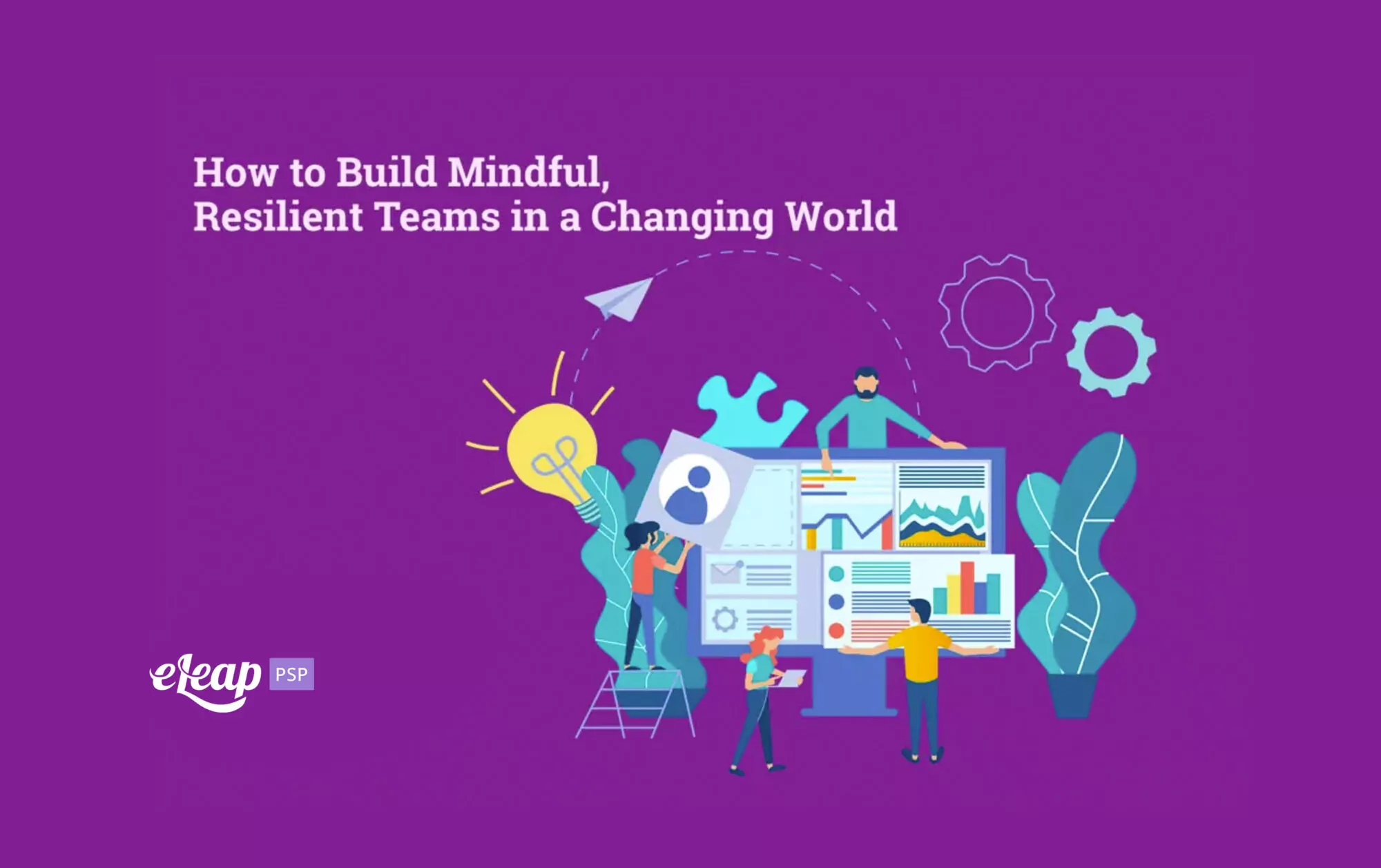How to Build Mindful, Resilient Teams in a Changing World

To say that 2020 highlighted the need for more resilient teams is an understatement. As COVID-19 spread around the world, it brought with it anxiety, fear, instability, and dramatic changes to our very lifestyles. The mind’s natural tendency, when faced with situations like this, is to find a distraction and focus on it. That leads to distraction, difficulty focusing on tasks, reduced performance and efficiency, and a drop in productivity.
It does not have to be that way, though. With the right steps, you can increase mindfulness, resilience, and mental well-being, even in the face of a crisis. Unsure how to achieve those goals? We will walk you through the most important considerations in this post.

The Tale of Two Arrows
In Buddhism, there is a story in which the Buddha explained to a learner that, “If someone is struck by an arrow, it is painful. However, if a second arrow strikes the same spot, it is much more painful.” The first arrow is all the things we cannot control – life itself, in many ways. The second arrow, on the other hand, is our reaction to those situations. We cannot control what life throws at us, but we can control how we respond.
Our responses to things like second and third COVID waves, to continuing to work from home, to the increasing fear and anxiety, are all completely natural and human. However, they are not necessarily well-suited to helping us cope with dire situations. In fact, they often make our pain exponentially worse. Instead of allowing our reactions to control us, we must take control to avoid being struck by that second arrow.
How do we do this, though? The answer is to develop mindfulness, resilience, and better well-being. The first step – mindfulness – is what we must cultivate to stop our suffering with the impact of the first arrow and avoid the pain of that self-inflicted second arrow.
How to Be Mindful
Mindfulness is wonderfully simple. Yet, for all that simplicity, it can be challenging to cultivate it. The thing to remember is that when feelings of fear, anxiety, or worry begin to build, we need to calm and clear the mind. Many ways exist to do this, but one of the simplest is just to focus on the breath to the exclusion of all else. Feel yourself breathing in, the air moving through the nose, down the windpipe to fill the lungs. Feel the out-breath, the air moving from the lungs, back up the throat, and out the nose.
Recognize Your Thoughts
It can be difficult to define what resilience is, particularly in relation to the mind and how it deals with crises. Really, it’s nothing more than being able to notice your thoughts, realize that, while compelling, they are not reality, and then pull yourself back from that particular precipice quickly.
Yes, thoughts can come on with surprising speed – how often do you “wake up” to realize that you’d been lost in thought and unaware of what was going on around you? Stress and anxiety compound that situation, making it even more challenging to mindfully recognize thoughts and pull back. However, with practice, we can begin doing just that and, over time, nurture our resilience.
Focus on the Positive
Yes, positivity can be toxic when taken too far. However, it is an essential lifeline that allows you to build resilience and deal with stress. By finding things to be thankful for helps you shift your focus from things that generate anxiety and increase stress to those that help you feel calmer and more in control. When we take the time to think about all the things we have to be thankful for, gratitude wells up and displaces anxiety.
Make Time to Reflect
Being able to put some space between your reaction and a stressful event is important. One way to do that is to pause and reflect. When something occurs that threatens your peace of mind, take a mental step back, breathe deeply in and out, and reflect on things.
With a little time to reflect, you help defuse the situation and avoid knee-jerk reactions to situations outside your control. Doing so can also provide you with some distance and allow you to disconnect not just from the situation but from the stressful emotions that it generates. In addition, making time to reflect can open up pathways to allow more positive thoughts and enable more positive planning.
Connect with Other People
Human beings are social animals. We thrive only when we’re part of a group. Having access to a group of people is crucial for building resilience and enhancing well-being, as well. Doing so can be challenging, though.
Working remotely certainly leads to a growing sense of isolation. Couple that with darker behaviors created and encouraged by the pandemic, and it becomes easy to forget how tightly we’re interconnected with one another. This makes it more important than ever to mindfully create connections with other people.
Healthy, meaningful connections are not just about finding a place to vent or people to help support you. It’s about showing compassion to others. When we find that place of compassion, when we’re able to help other people have better days, then we ourselves have better days. Our minds and spirits are lifted, and we feel renewed and rejuvenated. It becomes possible to feel encouragement even in the face of ongoing challenges.
With Mindfulness and Resilience, Well-Being Improves
It’s important to remember that mindfulness is not something that can be learned in one go. It requires that you recognize your thoughts, pull yourself out of them without judgment, and refocus and reframe your internal monologue.
Our well-being improves and decreases in correlation to our levels of stress and anxiety. Learning how to live a more mindful life helps us become more resilient, which in turn improves our well-being. That allows us to be happier and healthier, and even more productive in a work environment.